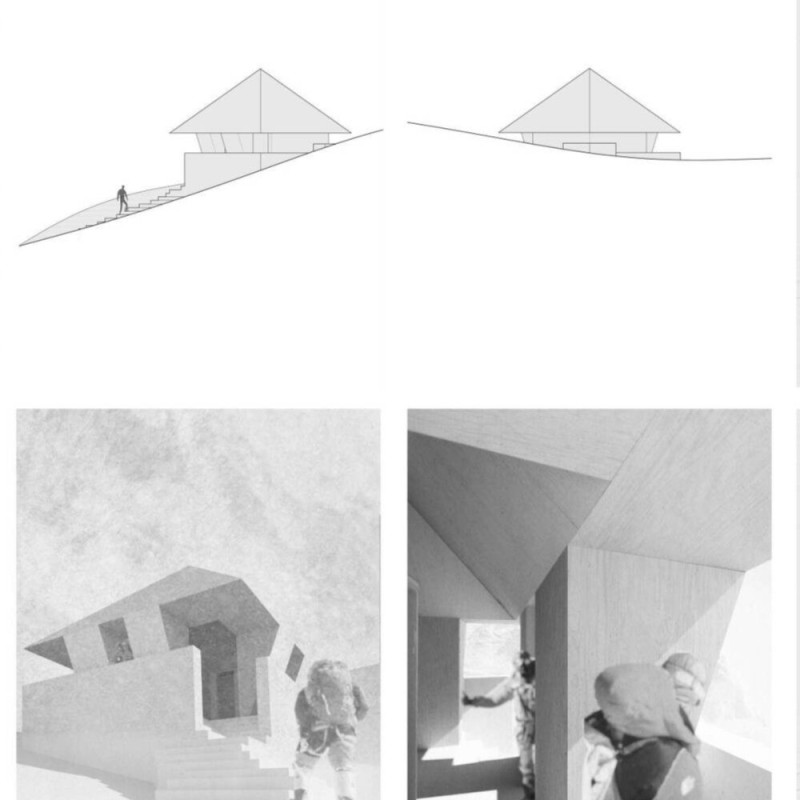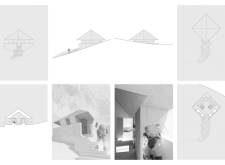5 key facts about this project
The Public Rest House / Plywood Temple addresses the need for bathroom facilities on Mount Everest. Set against the backdrop of this harsh, high-altitude environment, the design combines practical function with cultural significance. Inspired by traditional Newari architecture, the building aims to serve as a multifunctional space for weary travelers while also evoking a sacred atmosphere.
Design Concept
The core idea centers on merging utility with a sense of place. The space is meant to provide essential bathroom functions alongside opportunities for rest and reflection. By accommodating various user experiences, the design acknowledges the unique challenges faced by visitors in this demanding geographical location.
Materials and Construction
Construction emphasizes a straightforward method that ensures both durability and flexibility. A concrete platform serves as the foundation, anchored into the hillside. This is paired with a low retaining wall for stability. Above this base, a pavilion structure is built using wood studs and joists, which offer a strong yet lightweight framework. Plywood clads the walls, while areas exposed to the elements are covered with a waterproofing membrane and metal roofing to enhance resilience.
Spatial Organization
The building’s form is marked by symmetry and interesting angles that facilitate visibility while managing access. Attention is drawn to the toilet stalls, which play a crucial role in the design. Angled pillars add to the aesthetic and help define essential areas within the space. This design choice fosters a unique interaction between users and their environment.
Architectural Expression
The blend of traditional and contemporary influences is evident in the design’s geometric shapes and material choices. This combination creates a distinct character. Simple forms, coupled with careful attention to detail, encourage meaningful engagement from users. Public amenities in remote environments gain importance in the way they connect people to both their surroundings and their needs.
The angled pillars mark the alignment with the toilets, guiding focus and emphasizing their vital role within the overall setting.



















































